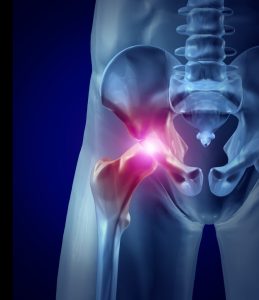
Hip osteoarthritis (OA) is a degenerative joint disease that occurs when the protective cartilage in the hip joint wears down over time. This condition can lead to pain, stiffness, and reduced mobility. Recognizing the early signs of hip osteoarthritis is crucial for timely intervention and effective management.
Hip osteoarthritis is the most common form of arthritis affecting the hip joint. It typically develops gradually and worsens over time. The condition is characterized by the breakdown of cartilage, leading to pain, swelling, and decreased joint movement. While OA is more common in older adults, it can also affect younger individuals due to factors such as previous joint injuries or genetic predisposition.

Recognizing the early signs of hip osteoarthritis can lead to more effective management and potentially slow the progression of the disease. Common early symptoms include:
One of the earliest symptoms of hip osteoarthritis is pain in the groin or outer thigh. This pain may start as a dull ache and can intensify after activities such as walking or standing for extended periods. The discomfort often worsens with activity and improves with rest.
Individuals with hip osteoarthritis often experience stiffness in the hip joint, particularly in the morning or after periods of inactivity. This stiffness can make it difficult to move the hip joint and may improve with gentle movement or stretching.
As the condition progresses, individuals may notice a reduced range of motion in the hip joint. Activities such as bending over, squatting, or crossing the legs may become challenging due to decreased flexibility and joint movement.
Swelling in the hip joint can occur due to inflammation caused by the breakdown of cartilage. This swelling may lead to a feeling of tightness or stiffness in the joint, further limiting movement and causing discomfort.
Some individuals with hip osteoarthritis may hear or feel a grinding sensation (crepitus) when moving the hip joint. This sound is caused by roughened cartilage surfaces rubbing together and is a common symptom of the condition.
Pain associated with hip osteoarthritis often worsens during or after physical activity. High-impact exercises or prolonged periods of walking can exacerbate symptoms. It’s essential to monitor activity levels and adjust to prevent overloading the joint.
As symptoms progress, individuals may find it challenging to perform daily activities such as walking, climbing stairs, or getting in and out of a car. This difficulty arises from pain and reduced mobility in the hip joint.
If you experience persistent hip pain, stiffness, or difficulty moving the hip joint, it’s essential to consult a healthcare professional. Early diagnosis and intervention can help manage symptoms and slow the progression of hip osteoarthritis. Your doctor may recommend imaging tests, such as X-rays or MRIs, to assess the extent of joint damage and develop an appropriate treatment plan.